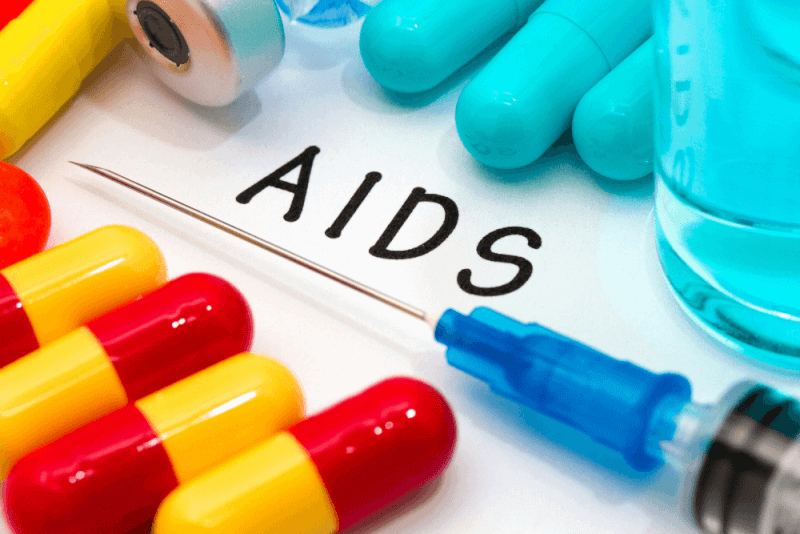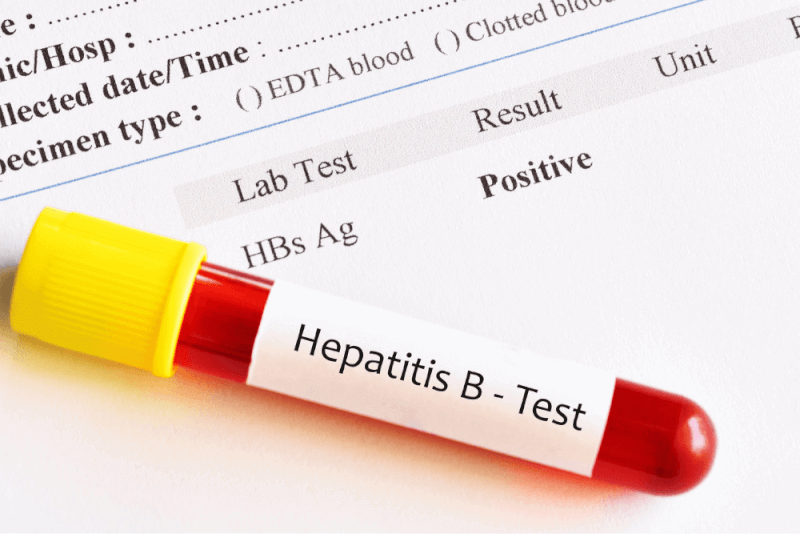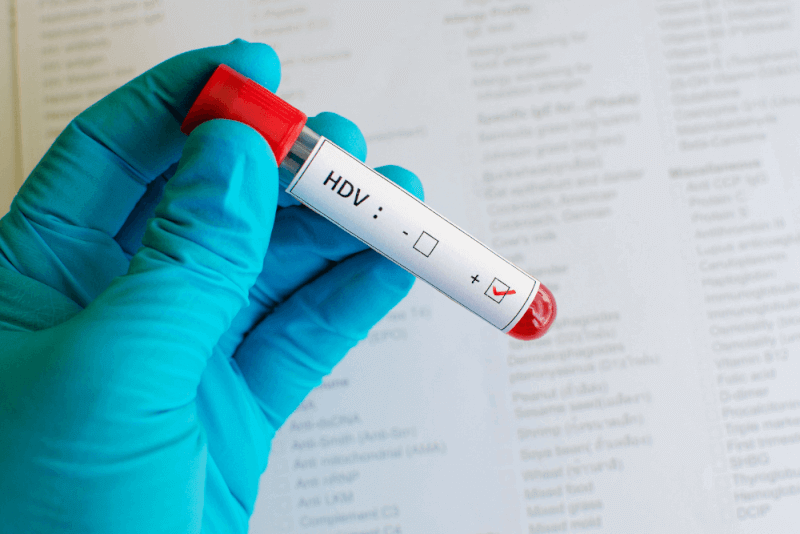What is AIDS?
AIDS, which stands for Acquired Immunodeficiency Syndrome, is one of the chronic diseases. It is caused by the human immunodeficiency virus, also known as HIV. This virus damages the immune system, making the body more vulnerable to diseases and infections. If HIV is not treated, the immune system can weaken to the point of developing AIDS.
In patients with AIDS, the number of white blood cells is extremely low. This is because the virus attacks and destroys T cells. Consequently, additional diseases may occur alongside AIDS. Untreated HIV infections can progress to AIDS in approximately 10 years.
Without being infected with the HIV virus, it is not possible to develop AIDS. However, almost all patients living with this virus progress to AIDS if not treated.
AIDS Diagnosis
To diagnose AIDS, the presence of the HIV virus in the body must first be detected. A saliva sample is sufficient for this virus. The test can be done at home, at a healthcare facility, or at community health centers. If the test is positive, further tests are applied. These tests include:
Antigen-Antibody Tests
Antigen tests look for markers called P24 on the surface of HIV. Antibody tests look for chemicals the body produces in response to these markers. Antigen-antibody tests look for both markers.
A blood sample is required for the test. HIV can be detected within 18 to 45 days after exposure to the virus with this test. However, to get accurate results, the test may need to be repeated up to 90 days.
Antibody Tests
These tests use blood or saliva samples. Antibody tests provide accurate results within 23 to 90 days. Antibody tests done with blood provide results earlier compared to tests done with saliva or a finger-prick blood sample.
Nucleic Acid Tests
These tests look for the HIV virus in the blood and require a blood sample taken from a vein. The virus is generally detected within 10 to 33 days after exposure. However, this test is not applied to individuals who are not at high risk. If the test is positive, other tests may be requested to evaluate health. In addition to these tests, a complete blood count is also done. Other external tests include:
- Viral hepatitis screening
- Tuberculosis
- Chest X-ray
- CD4 count
- PAP smear
AIDS Symptoms
The symptoms caused by AIDS can originate from the HIV infection. However, many of the symptoms are caused by diseases that take advantage of a weakened immune system. The symptoms vary depending on the stage of HIV and AIDS.
Primary Infection (Acute HIV)
Within 2 to 4 weeks after the HIV virus enters the body, flu-like symptoms are observed. This stage lasts from a few days to a few weeks. Some patients may not show any symptoms during this stage. Possible symptoms include:
- Fever
- Muscle aches
- Headache
- Joint pain
- Sore throat
- Rash
- Painful mouth sores
- Swollen lymph nodes, mainly in the neck
- Night sweats
- Diarrhea
- Cough
- Weight loss
Symptoms at this stage can be very mild, which is why they might be overlooked. However, during this period, the viral load in the bloodstream increases, and the infection progresses to the next stage, spreading to others more rapidly.
Clinical Latent Infection (Chronic HIV)
At this stage, white blood cells are still present in the body, but the virus does not cause symptoms or infections. This stage can last for many years in people not using antiretroviral drugs. Some people may develop severe diseases much more quickly.
Symptomatic HIV Infection
As the virus increases and continues to destroy white blood cells, mild infections or chronic symptoms start to appear. Possible symptoms at this stage include:
- Fever
- Fatigue
- Swollen lymph nodes
- Diarrhea
- Weight loss
- Oral yeast infection
- Shingles
- Pneumonia
Progression from HIV to AIDS
If the HIV virus is not treated, it progresses to AIDS within 8 to 10 years. However, with treatment, it rarely progresses to AIDS. The progression of the infection to AIDS means that the person's immune system has been severely damaged. This significantly increases the likelihood of opportunistic infections or cancers. Some of the symptoms of these infections include:
- Sweating
- Skin rashes or bumps
- Chills
- Rapid weight loss
- Recurring fever
- Weakness
- Swollen lymph nodes
- Persistent fatigue
- Persistent white spots or lesions
Causes of AIDS
AIDS is caused by the HIV virus infection. The virus attacks the helper T cells in the immune system. This causes the immune system to collapse severely. AIDS occurs when the number of immune cells is so low that it can no longer fight other diseases.
AIDS Treatment Methods
There is no cure for both HIV and AIDS. Once infected with the HIV virus, the body cannot get rid of it. However, there are medications that can control this infection and prevent complications.
All patients diagnosed with HIV must use antiretroviral therapy (ART) drugs. These drugs must be used regardless of the stage of the disease or its complications.
ART is usually a combination of two or more drugs from different classes. This reduces the amount of HIV in the blood. Each drug class used blocks the virus in different ways. When planning the treatment, mixing drugs from different classes aims to:
- Consider drug resistance called viral genotype
- Avoid creating new drug-resistant strains of HIV
- Suppress the amount of virus in the blood as much as possible
Usually, two drugs from one class and one drug from another class are used. Anti-HIV drug classes include:
Non-nucleoside reverse transcriptase inhibitors
These drugs shut down a protein the virus needs to make copies of itself. Examples in this class include efavirenz, rilpivirine, and doravirine.
Nucleoside or nucleotide reverse transcriptase inhibitors
These are faulty versions of the building blocks the virus needs to make copies of itself. Drugs used in this class include:
- Abacavir
- Tenofovir disoproxil fumarate
- Emtricitabine
- Lamivudine
- Zidovudine
Zidovudine is not recommended for routine use in recent years due to its high toxic effects.
Protease inhibitors
This class of drugs is used to inactivate HIV protease. HIV protease is another protein the virus needs to make copies of itself. Drug groups in this class include atazanavir, darunavir, and lopinavir-ritonavir.
Integrase inhibitors
HIV uses integrase to establish itself in CD4 T cells. This class of drugs blocks the action of a protein called integrase. Drugs used in this class include bictegravir sodium emtricitabine tenofovir alafenamide fumarate, raltegravir, dolutegravir, and cabotegravir.
Entry or fusion inhibitors
This class of drugs is used to prevent the virus from entering CD4 T cells. Examples in this class include enfuvirtide and maraviroc.
Starting and Continuing Treatment
Everyone with an HIV infection must use antiviral drugs regardless of their CD4 T cell count or symptoms. Using these drugs is the best way to stay healthy. It is very important to take ART drugs as prescribed. Missing doses and not taking them regularly can reduce the viral load in the blood. Using ART drugs helps patients by:
- Keeping the immune system strong
- Reducing the risk of getting infected
- Reducing the risk of getting drug-resistant HIV
- Reducing the risk of spreading it to others
Continuing treatment can sometimes be difficult. Possible side effects, problems with taking the medication, and mental health or substance use issues that make it difficult to continue HIV treatment can cause treatment to be discontinued. Regular follow-up appointments are important to monitor health and response to treatment.
Side Effects of Treatment
Possible side effects of HIV treatment include:
- Nausea
- Vomiting
- Diarrhea
- Heart disease
- Kidney damage
- Liver damage
- Weakening of the bones
- Bone loss
- Increased blood sugar
- Problems with thinking, emotions, and sleep
Response to Treatment
Doctors monitor viral load and CD4 T cell count to see how the HIV treatment is working. The first check is done within 4 to 6 weeks. Subsequent checks are done every 3 to 6 months. The goal of treatment is to reduce the viral load in the blood to undetectable levels. This reduction does not mean that HIV is completely gone. Even if it cannot be detected in the blood, HIV still lives in the body.
Who is Most at Risk for AIDS?
Although there is a myth that AIDS only affects certain people, anyone exposed to the virus can contract HIV. Unprotected sex and sharing needles for drug injection are among the most common ways HIV spreads. Some populations are statistically more affected by HIV than others. Groups affected in some way include:
- Men who have sex with men
- Black or Hispanic individuals
- People who have sex in exchange for money or other goods
Although the groups mentioned above are not the only populations affected by HIV, social stigma continues to increase inequalities and prevent people from accessing high-quality healthcare.
Ways AIDS is Transmitted
Ways in which the HIV virus is transmitted include:
- Semen
- Blood
- Vaginal fluids
- Breast milk
- Rectal fluids
The areas where the virus enters the body include the mouth, anus, penis, vagina, or skin wounds. The virus cannot pass from person to person through intact skin. If a woman with HIV becomes pregnant, there is a possibility that the virus will be transmitted to her baby.
Additionally, since HIV is not spread through saliva, kissing is not a common way of contracting the infection. However, if both individuals have open sores or bleeding gums in their mouths, there is a risk of contracting HIV through kissing.
Situations where HIV cannot be transmitted include:
- Kissing
- Touching or hugging an infected person
- Using public baths or swimming pools
- Sharing cups, utensils, or phones with infected persons
- Insect bites
- Donating blood
Ways to Prevent AIDS
Ways to reduce the risk of AIDS include:
- Using condoms during sex.
- Not using condoms made from animal products.
- Using water-based lubricants.
- Not sharing needles for drugs or medication.
- Getting tested and treated for other STDs.
- Avoiding getting drunk, as drunk people are less likely to protect themselves.
- If at high risk of HIV exposure, consulting healthcare professionals about pre-exposure prophylaxis.
- If considering exposure to HIV, contacting a doctor as soon as possible to find out if post-exposure prophylaxis is necessary.
- Getting tested to learn if you are at risk of transmitting HIV to others.
Pre-exposure Prophylaxis (PrEP)
Also known as PrEP, this medication is a daily pill used when there is no HIV infection but there is a high risk of contracting it. PrEP is recommended if you do not have HIV but have had anal or vaginal sex in the last 6 months and at least one of the following applies:
- Having a sexual partner with HIV
- Not consistently using a condom
- Being diagnosed with a sexually transmitted infection in the last 6 months
If you do not have HIV and use intravenous drugs, PrEP is recommended if at least one of the following applies:
- Injecting drugs with a partner who has HIV
- Sharing needles or other equipment for injecting drugs
Post-exposure Prophylaxis (PEP)
PEP medications are used immediately after exposure to the HIV virus to prevent infection. PEP is suitable for individuals who do not have HIV or do not know if they have it and believe they have been exposed to the virus through consensual sex, sexual assault, or shared needles. PEP should be started within 72 hours after exposure and used every day for 28 days. PEP is for emergency use only and should not replace other precautions such as condom use.
AIDS Complications
HIV infection weakens the immune system, increasing the risk of various infections and certain types of cancer. Common infections seen with HIV and AIDS include:
Pneumocystis Pneumonia (PCP)
PCP is a type of fungal infection and is the most common cause of pneumonia in people with HIV.
Candidiasis
Also known as thrush, candidiasis is a common infection seen with HIV. It causes a thick white coating in the mouth, tongue, esophagus, or vagina.
Tuberculosis
Tuberculosis is a common infection associated with HIV. It is one of the leading causes of death among people with AIDS.
Cytomegalovirus
This very common herpes virus is transmitted through body fluids such as urine, saliva, blood, semen, and breast milk. In individuals with a healthy immune system, the virus becomes inactive but remains in the body. When the immune system weakens, the virus reactivates and damages the eyes, lungs, digestive system, or other organs.
Cryptococcal Meningitis
Meningitis is the inflammation, swelling, and irritation of the membranes surrounding the brain and spinal cord. Cryptococcal meningitis is a common central nervous system infection associated with HIV. It is caused by a type of fungus found in the soil.
Toxoplasmosis
Toxoplasmosis, caused by the parasite Toxoplasma gondii spread by cats, is an infection that can be transmitted through the feces of infected cats. It can cause heart disease and, if it spreads to the brain, can cause seizures. It can be fatal for some patients.
Common cancers seen with AIDS include:
Lymphoma
This cancer starts in the white blood cells. The most common early symptom is usually the painless swelling of lymph nodes in the neck, armpit, or groin.
Kaposi's Sarcoma
This cancer of the blood vessels appears as pink, red, or purple lesions, known as tumors, on the skin and in the mouth. In black or dark-skinned individuals, the lesions may appear dark brown, black, or deep purple. Kaposi's sarcoma can also affect internal organs, including the lungs and digestive system.
Human Papillomavirus-related Cancers
These cancers are caused by HPV infections and include oral, cervical, and anal cancers.
Other complications that may occur due to AIDS include:
Wasting Syndrome
If HIV or AIDS is not treated, it can cause significant weight loss. Along with weight loss, diarrhea, weakness, and fever often occur.
Brain and Nervous System Complications
HIV can cause neurological problems such as confusion, depression, forgetfulness, difficulty walking, and anxiety. Neurological conditions associated with HIV range from mild behavioral changes and reduced mental functions to severe dementia.
Kidney Disease
HIV-associated nephropathy is inflammation, swelling, and irritation of the small filters in the kidneys. These filters remove excess fluid and waste from the blood and transfer it to the urine. Kidney disease mostly affects black and Hispanic individuals.
Liver Disease
This is a serious complication, especially for people with hepatitis B or hepatitis C.








